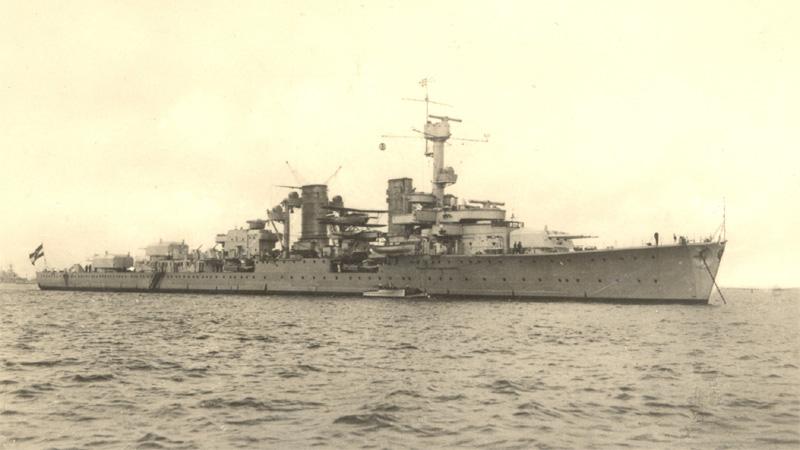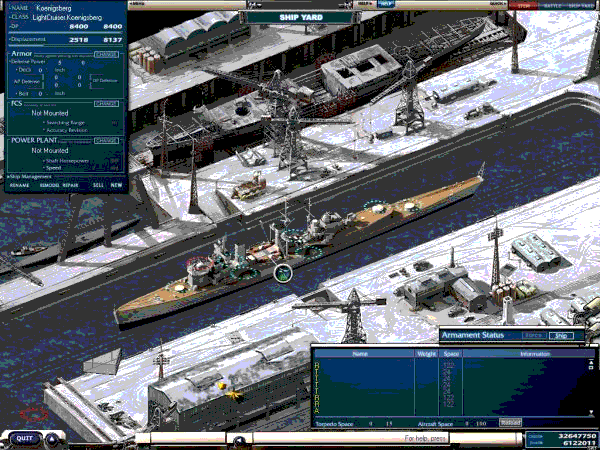The K class was a class of light cruisers of the German Reichsmarine and Kriegsmarine, consisting of three ships named after German cities starting with the letter "K": Königsberg, Karlsruhe, Köln. It's also referred to as Königsberg class according to the convention of naming classes after the first completed vessel. 
Kreigsmarine Light Cruisers - Koenigsberg Class (D-38) ==========================================================================

The class was designed in the 1920s, adhering to the 6,000 ton limit for cruisers imposed on Germany by the Treaty of Versailles. To stay within this limit, 85% of the ships' joints were welded instead of bolted. This led to problems, as the welding did not withstand the stress of long sea journeys as well as had been hoped. One unit had to interrupt a cruise to undergo significant repairs at San Diego. In addition, the ships suffered major stability problems which, along with the structural ones, led to their being confined to the home waters of the North Sea and Baltic during World War II and precluded their use as commerce raiders.
The main battery was grouped in three triple-turrets, one forward and two aft. This unconventional placement was because the K class were designed as scouting cruisers with the intention that they would "hit and run." This allowed two thirds of their firepower to be directed astern at pursuing vessels. In order to increase firepower ahead, the aft turrets were not placed on the centerline of the ship. The aftermost turret was positioned on the starboard side, the middle turret was positioned on the port side of the ship. This allowed the middle turret to train further forward at targets to port, while the aftermost turret could train further forward at targets to starboard. This shrank the area in which only one turret would be available. The off-centre arrangement also assisted the engine-room layout. The ships had both steam turbine and diesel engines, the former to be used for high speed, the latter for fuel-economical cruising. Howeverm the two power plants could not be used simultaneously.
After a number of foreign visits in the 1930s, the ship operated along the Spanish coast from November 1936 to January 1937 during the Spanish Civil War. Her design and construction rendered her poorly suited to commerce raiding or deep-water operations, and when war broke out in September 1939 she was assigned to duty as a torpedo training ship in the Baltic and subsequently used for mine laying operations in the North Sea (Operation "Westwall").
Königsberg and Karlsruhe were lost during the invasion of Norway in World War II- Karlsruhe after being torpedoed at Kristiansund and Königsberg, bombed at Bergen, Norway. Köln was used as a training ship for most of the war, before being bombed and sunk in the shallow water of Wilhelmshaven harbor. She remained in action, however, and shelled advancing Allied forces.
The "K class" ships were followed by a modified two-ship class composed of the Leipzig and the Nürnberg which differed from them principally in terms of having only one funnel instead of two, and having the two aft turrets on the centerline, as well as somewhat different machinery (but retaining the dual propulsion concept). These ships suffered from the same defects of structural weakness and instability as the "Z class" destroyers, and were likewise confined to the Baltic and North Sea during World War II for these reasons.
In early April 1940, Königsberg participated in Gruppe 3 of the invasion of Norway (Operation "Weserübung"), transporting troops from Wilhelmshaven to Bergen, Norway, together with her sistership Köln, the artillery training ship Bremse and the torpedo boats Wolf and Leopard. Königsberg and Bremse were damaged by Norwegian coastal artillery batteries at Kvarven Fort on 9 April 1940, causing them to remain in port while the other ships returned to Germany. The next day, 16 Blackburn Skua dive bombers of the British Fleet Air Arm (7 of 800 Naval Air Squadron and 9 of 803 Naval Air Squadron, launched from RNAS Hatston, Orkney) scored three direct hits on Königsberg. The ship capsized and sank in Bergen harbor.
The wreck was raised on 17 July 1942, and after being righted in March 1943 was used as a pier for U-boats. The wreck capsized again on 22 September 1944, and was broken up after the end of World War II in Bergen.

=================================================================================
NB: The above text has been collected / excerpted / edited / mangled / tangled / re-compiled / etc ... from the following online sources :
KM - Cruiser Königsberg - wikipedia article #1
KM - Cruiser Königsberg - wikipedia article #2
KM - Cruiser Königsberg - www.german-navy.de



